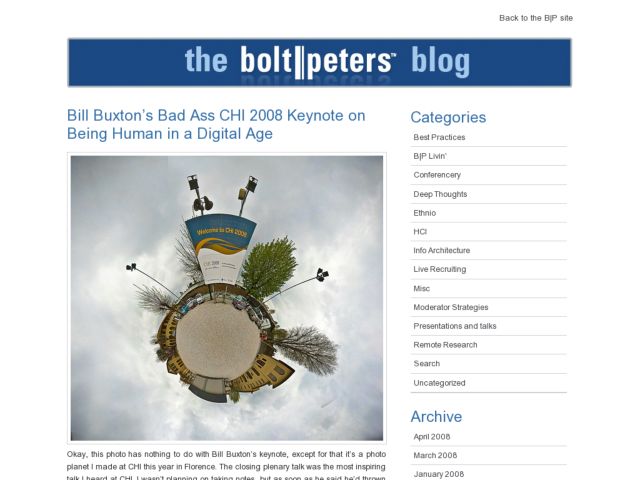Bolt|Peters summarizes Bill Buxton's talk at CHI 2008, which is focussed largely around his theory of long nose. The article in BusinessWeek describes the danger of trying to innovate around the long tail theory alone, and attempts to create awareness for this other phenomenon which he calls the long nose. The theory describes how the bulk of innovation is low-amplitude and takes place over a long period of time.
[T]he bulk of innovation behind the latest "wow" moment (multi-touch on the iPhone, for example) is also low-amplitude and takes place over a long period—but well before the "new" idea has become generally known, much less reached the tipping point.
In terms of the long, often slow process of arriving at that critical point of acceptance or realization, Buxton referenced in his Chi talk the work of Benvenuto Cellini. Cellini was an Italian Renaissance painter and craftsman who, Buxton pointed out, worked on a single sculpture over the course of seven years. By craft, he wasn't a sculptor, but he was able to invest in this long term engagement, driven by a heady pursuit that ended in the creation of a masterpiece, Perseus with the Head of Medusa.
Buxton's long nose theory asks us to focus on refining existing tools as much as creating new ones. He also reminds us to recall and understand the history of what has been done in the past. This knowledge of the history of design, and the refinement of those ideas, he argues, is what leads to the acceptance of innovation.
To make this point, he references the Marcel Proust quote below when he discusses his tongue-in-cheek press release calling the iPhone a re-release of the Newton:
“The only true voyage of discovery is not to go to new places, but to have other eyes.” Basically, you don’t transform things by doing them from scratch, but by seeing them through different eyes.
His point here is that the lessons learned and the refinement of ideas introduced in the Newton years ago, and in the research on input devices and touch screens must have certainly played a part in the evolution of ideas leading to the iPhone. This was a slow evolution, and not an overnight innovation.
Buxton also references the 30 year history of the introduction of the idea of the mouse with Doug Englebart's 1965 demonstration to the broad acceptance of the input device in the mainstream when Microsoft released Windows 95. He goes on to say that this length of time is common--that any technological innovation "that is going to have significant impact over the next 10 years is already at least 10 years old."
The final message of the long nose is that refinement, not invention, is the bulk of the work and creativity required for innovation.
